Growing a lively and tasty herb garden is exciting, especially with so many different kinds of basil that smell and taste great. As we learn more about growing basil, we find lots of types that aren’t just the usual sweet basil. Let’s take a closer look at all the different basils, their tastes, and how pretty they can make a garden beautiful.
About The Rich World of Basil

The rich world of basil is a term that explains the origin of Asia and Africa. It was initially native to India. There are many species of basil found including the types with culinary purposes as well as those used for medicinal benefits.
The basil which goes by the name “Osmium basilicum,” is aromatic and has had a history of over five thousand years of being cultivated worldwide. It had the name basil in Greek, which meant royal, implying its former significance.
There are many types of basil more than 60. Each type has a special flavor. Sweet basil is often used in Italian food, lemon basil is tangy, and Thai basil is important in Asian dishes. In India, people value holy basil, also known as Tulsi, for its health and spiritual purpose.
How to Grow This Aromatic Herb basil

start planting basil seeds in the soil, make sure they are only 0.25 inches deep. They will sprout in 5 to 7 days. When they have 2 or 3 sets of real leaves, move them to a new spot. To plant the sprouted seeds or young plants in the soil, leave 10 to 12 inches between them. Basil will reach 12 to 24 inches tall. A layer of 2 or 3 inches of compost or chopped leaves keeps the soil wet and stops weeds from growing near the plants.
Check out Top 20 Medicinal Plants of the USA: A Gardener’s Guide
Navigating the Tricky Terrain of Basil Cultivation
Basil is a well-loved herb for cooking, but it’s important to know how to grow it right. It needs plenty of sun, soil that drains water well, and to be warm. It’s best to plant basil when it gets warm in spring. For growing in pots, it’s good to use raised planters or pots that let water drain out well.
Basil: A Heat-Loving Culinary Marvel

Basil is a herb that loves the sun and grows well in gardens and pots. For it to grow the best, especially in pots, it’s important to use really good soil and compost. Basil is not just good for cooking; people who like to garden also love it because it smells nice and has many different kinds of leaves.
Beyond Flavor: Aesthetic Pleasures of Basil
Basil isn’t only good for flavoring food; it also makes gardens beautiful. The plants have shiny green leaves, and some kinds have purple or colorful leaves. It’s perfect for cooks and anyone who loves a garden that smells good. Greek basil grows in straight lines and looks neat, while ‘Pesto Perpetuo’ basil catches the eye and makes gardens nicer to look at and smell.
Check out Top 20 Medicinal Plants of the USA: A Gardener’s Guide
Basil Varieties and Flavors: A Deeper Dive
Dive into the plethora of basil varieties available through seed companies and garden centers, each offering a unique culinary and aesthetic experience. Let’s explore some standout varieties:
1. Sweet Basil
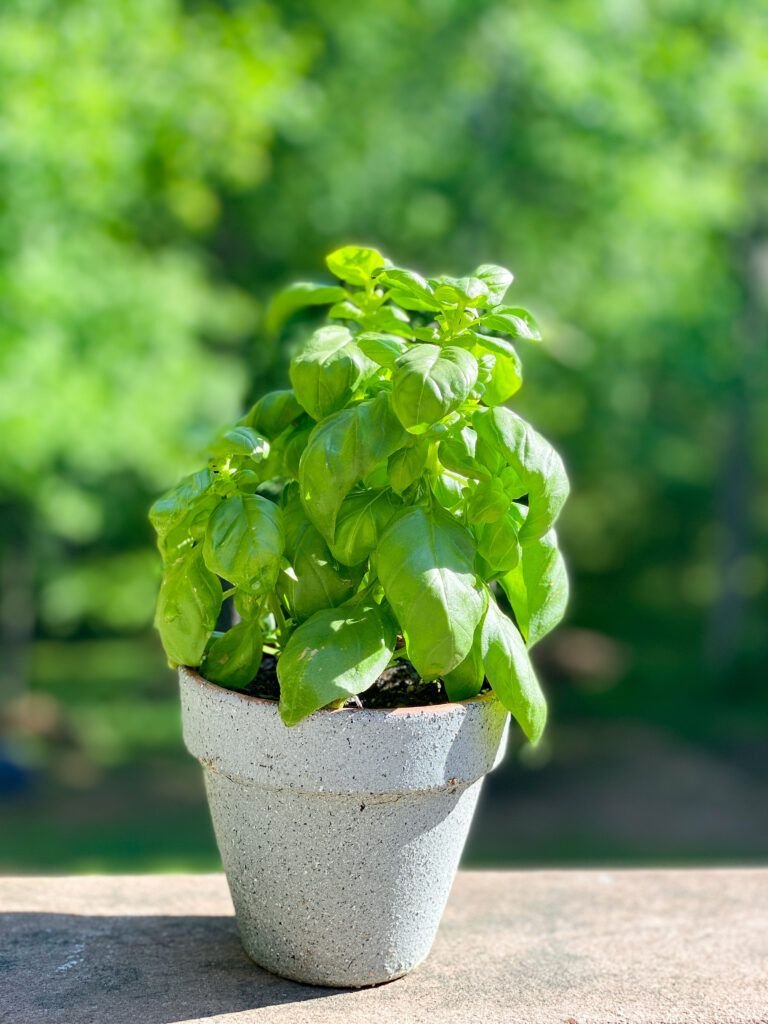
Botanical Name: Ocimum basilicum
Sweet basil is a popular herb in the summer known for its spicy clove taste that’s perfect for making pesto. Types like ‘Everleaf’ are good because they don’t go to seed too quickly, stay small, and grow a lot. Lettuce basil, like the Napoletano kind with big, wavy leaves, is great for adding something special to pesto, salads, or sauces.
2. Holy basil
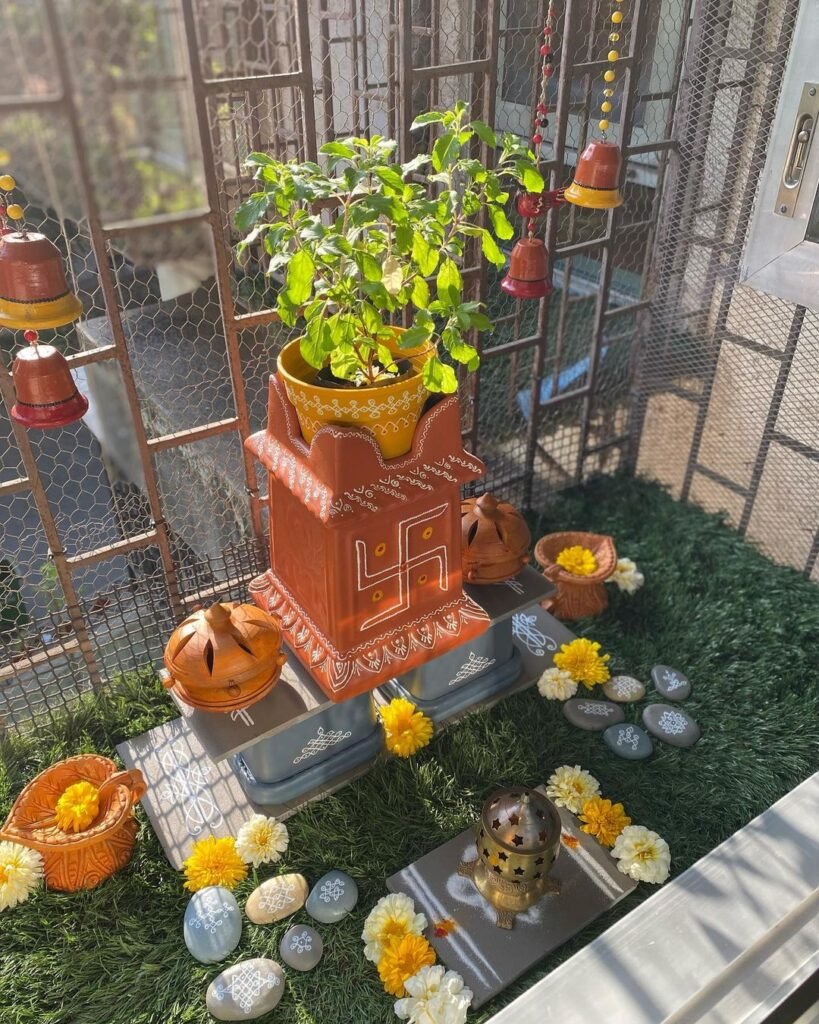
Botanical Name: Osmium tenuiflorum
This is a type of basil that has small, green, hairy leaves and purple stems and flowers. It has a spicy and peppery flavor and is considered sacred in Hinduism. It is used for medicinal and religious purposes and can also be used for teas, soups, and rice dishes.
3. Genovese Basil
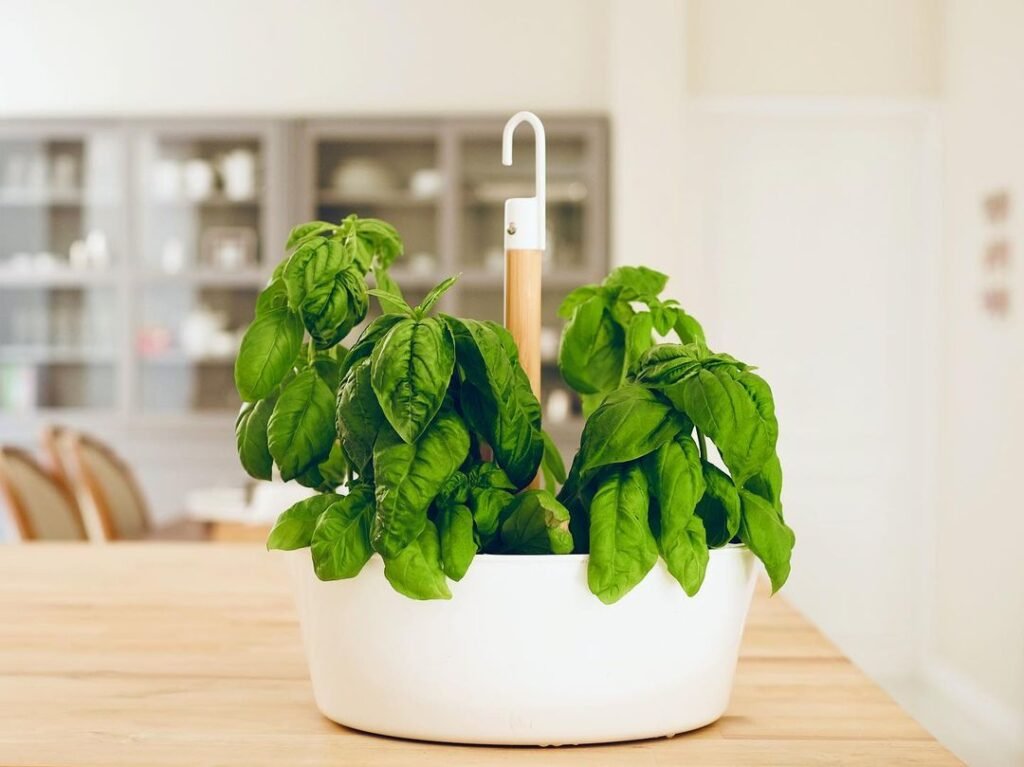
Botanical Name: Osmium basilicum
Genovese basil is a type of sweet basil that has flatter and pointier leaves than the regular sweet basil. It has a more aromatic and clove-like flavor and is also great for pesto and Italian dishes. Genovese basil is the most popular basil in Italy and is often used fresh or dried.
4. Lettuce Leaf Basil
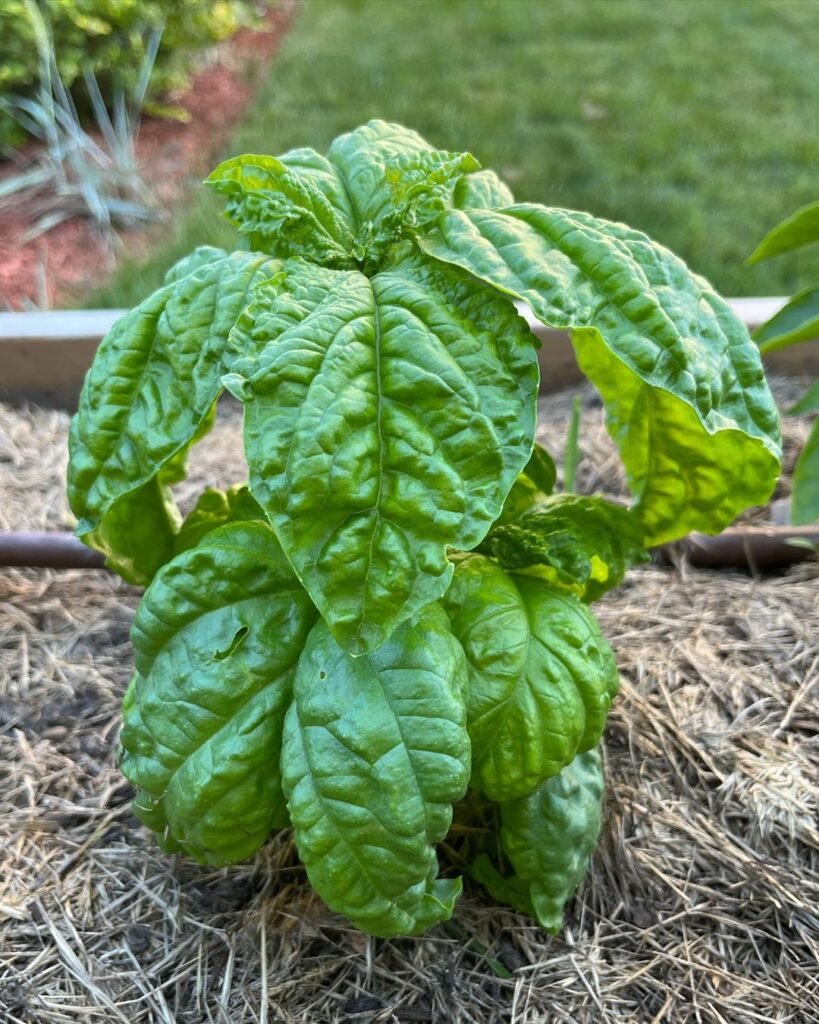
Botanical Name: sweet basil
Lettuce leaf basil is another type of sweet basil that has very large and ruffled leaves that resemble lettuce. It has a mild and sweet flavor and can be used for salads, wraps, and sandwiches. Lettuce leaf basil is also good for making basil oil and vinegar.
5. Lemon Basil

Botanical Name: Ocimum basilicum var. citriodorum
Lemon basil is great for people who like citrus flavors because it smells and tastes strongly of citrus. The ‘Mrs. Burns’ Lemon’ kind grows to about 18 inches tall and is good for making teas, lemonades, cocktails, salads, and trying out new recipes.
6. Greek Basil
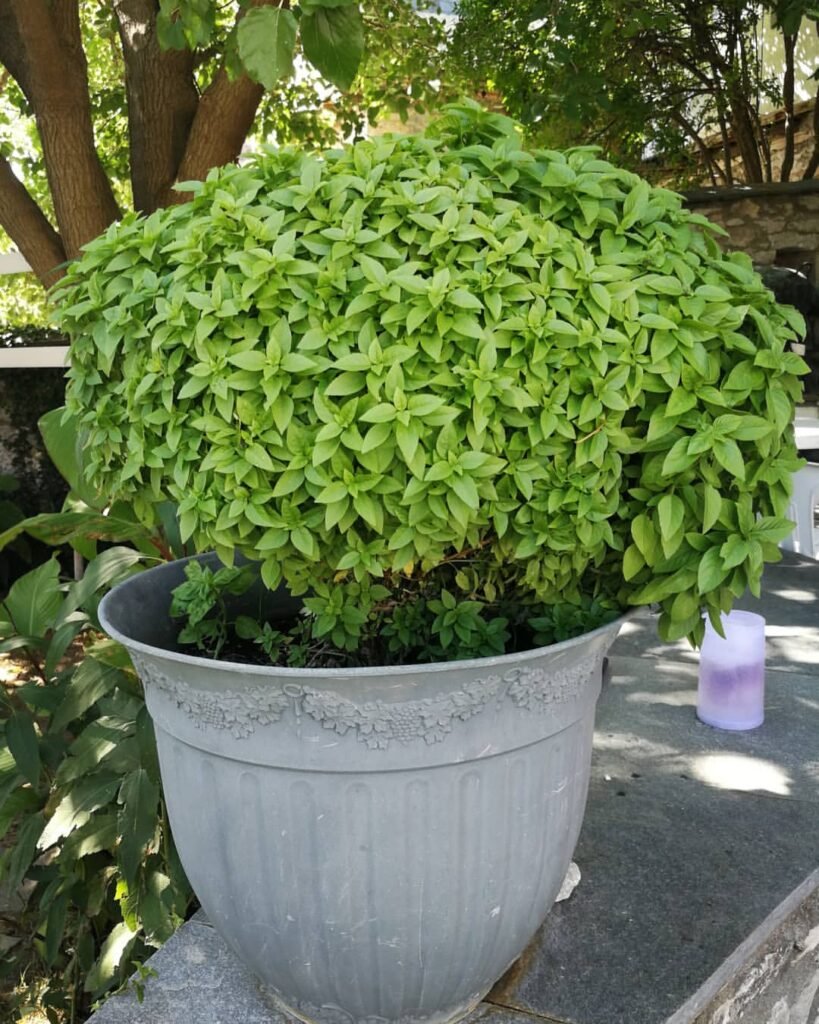
Botanical Name: Ocimum basilicum var. minimum
Greek basil, sometimes called little leaf or fine leaf basil, is pretty and good for cooking. Types like ‘Spicy Globe Basil,’ ‘Aristotle,’ ‘Pluto,’ and ‘Fino Verde’ have small leaves that taste very much like basil, which is perfect for cooking in different ways.
7. Purple Basil
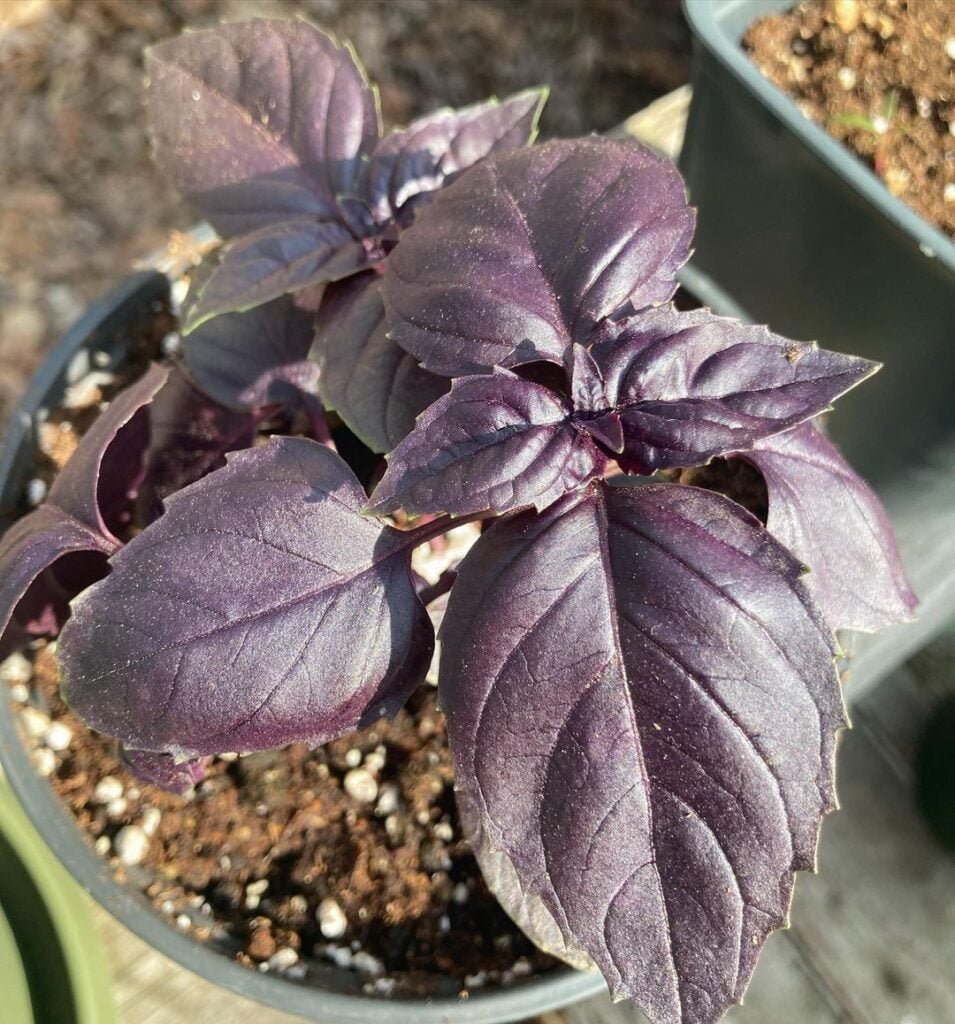
Botanical Name: Ocimum basilicum var. purpurascens
Purple basil types like ‘Purple Ruffles Basil’ and ‘Dark Opal Basil’ make gardens look more interesting. They have dark purple leaves and flowers that bees like, which makes them pretty and tasty for growing in pots.
8. Cinnamon Basil

Botanical Name: Ocimum basilicum ‘Cinnamon’
Mexican basil is a plant with a strong smell of cinnamon and has smaller leaves compared to regular sweet basil. It’s easy to spot because of its bright purple stems and flowers, which add beauty and a nice scent to gardens and flower arrangements.
9. Thai Basil

Botanical Name: Ocimum basilicum var. thyrsiflora
Thai basil is important for making Vietnamese pho and it’s also great for adding flavor to salads, curries, noodles, and stir-fries. The ‘Siam Queen’ variety is neat in growth, slow to bloom, and has a great flavor.
Combatting Downy Mildew: A Basil Grower’s Challenge
Growing good basil means watching out for a bad sickness called downy mildew. This sickness makes the top of the leaves turn yellow and the bottom gets a weird black fuzz. It’s smart to choose basil types that don’t get sick easily, like Amazel, Prospera, Eleonora, and Everleaf. Always look for new kinds of basil that can fight this sickness when you’re picking seeds.
Check out Discovering 10 Interesting Vegetables That Start with “I”
Growing basil is fun because there are so many types. They come in different tastes, looks, and colors. If you like to cook or garden, there’s a whole world of basil waiting for you. It’s like a fun trip for your taste and smell that’s very cool.
Frequently Asked Questions
Are Tulsi and Basil the same?
No, tulsi and basil are not the same. They are different herbs with different scientific names, flavors, aromas, and uses. Tulsi is a sacred plant in Hinduism and has a strong, pungent, and slightly bitter taste. Basil is a popular herb in Italian cuisine and has a sweet, slightly peppery flavor. You can read more about the differences between tulsi and basil
What is the most fragrant basil?
the most fragrant basil variety is Blue Spice Basil, which has a delightful blend of vanilla, lemon, and anise aromas. Another basil variety is Holy Basil is highly fragrant with a spicy, sweet musky scent.
Pingback: Windowsill Wonders: Best Herbs for Indoor Growing -
Pingback: 15 Of The Best Plants To Grow In Your Kitchen -
Pingback: Plants That Repel Mosquitoes: How to Keep Your Garden and Home Bug-Free
Pingback: How to Dry Basil Leaves: The Complete Guide
Pingback: Summer Flower Arrangements: 11 Quick and Easy Ideas
Pingback: Dealing with Tomato Hornworms: A Guide for Gardeners